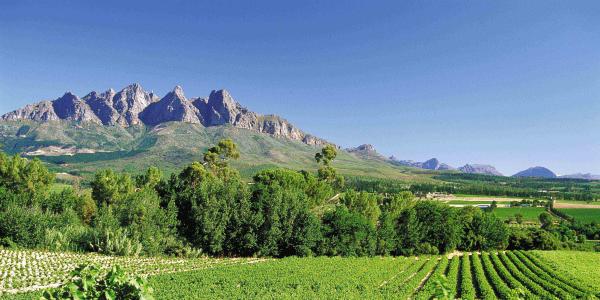
Wine’s roots in South Africa can be traced to the 17th century, when Jan van Riebeeck arrived at the Cape in 1652 and recommended to the Dutch East India Company that the Cape would serve as a useful victalling station for the ships on their passage to the East. Thus, in 1655 a shipment of grape vine cuttings (mainly from France) arrived in Table Bay and soon after the first vineyards were planted. In 1659, the first wine was made by Jan van Riebeeck himself but it was still poor quality wine.
Simon van der Stel’s arrival marks the start of the Winemakin in South Africa. Commander of the Dutch Colony at the Cape of Good Hope, Simon van der Stel’s planted his first vines in 1685 in Groot Constantia, where fertile soil, sloping hills and ocean breezes where near-perfect conditions enabled Simon van der Stel to make an exceptional sweet wine.
When the French Huguenots brought their knowledge of vineyard and cellar practice in the Cape in 1688 in the Franschhoek Valley, the viticulture faced a long period of prosperity.
The end of the 18th century was making some four million liters of wine made annually in South Africa. In the early 19th century, when the Cape passed from Dutch to British control, the vineyard area just doubled in size in a couple of decades and by 1825, wine accounted for more than half value of the Cape’s exports.
Today, South Africa is one of the top ten wine producing countries in the world. Many kinds of wines are produced here: MCCs, red wine (mainly merlot, cabernet sauvignon, shiraz and pinotage), white wines (mainly sauvignon blanc, chenin blanc and chardonnay).
The main wine-producing regions of South Africa:
The Cape winelands stretch from the rugged mountains and multi-directional slopes of the coastal region to the open plains of the Klein Karoo. South Africa’s vineyards are mostly situated in the Western Cape near the coast. Here are the main wine-producing regions you should discover:
- Constantia/Steenberg: on the southern slopes of the Table Mountain range lies the historical Constantia valley, the cradle of winemaking in the Cape. The valley was the site of the origine of the Constantia dessert wines, which became famous throughout Europe during the 18th century.
- Stellenbosch: some 150 wine producers include some of the most famous names in Cape wine. The district is known for the quality of its blended reds. The “town of oaks” is also the educational and research centre of the winelands.
- Franschoek: the “gourmet capital” of the Cape lies to the southeast of Paarl and has retained its French Huguenot character.
- Worcester: as the largest district in terms of winegrowing area and volume, Worcester accounts for nearly 20% of the national vineyards and produces close on 27% of South Africa’s total volume of wine and spirits.
- Robertson: dubbed the “valley of vines and roses”, the Robertson district is situated in the Breede River valley. It is renowned for the quality of its white wines, mainly for its Chardonnays and Sauvignon Blanc, but also for some of the Cape’s finest red wines, as Shiraz and Cabernet Sauvignon.
When to visit the winelands?
- From fresh green leaves in September: winter is a lovely time to visit the Cape Winelands as everything goes green. Although it is the rainy season, there are many sunny days in the offing.
- To the harvest season in February
- To the colorful aging vines in April-May
Some of the best wine estates close to Cape Town
- Groot Constantia
- Klein Constantia
- Cavalli Wine Estate
- Balylonstoren
- Marianne